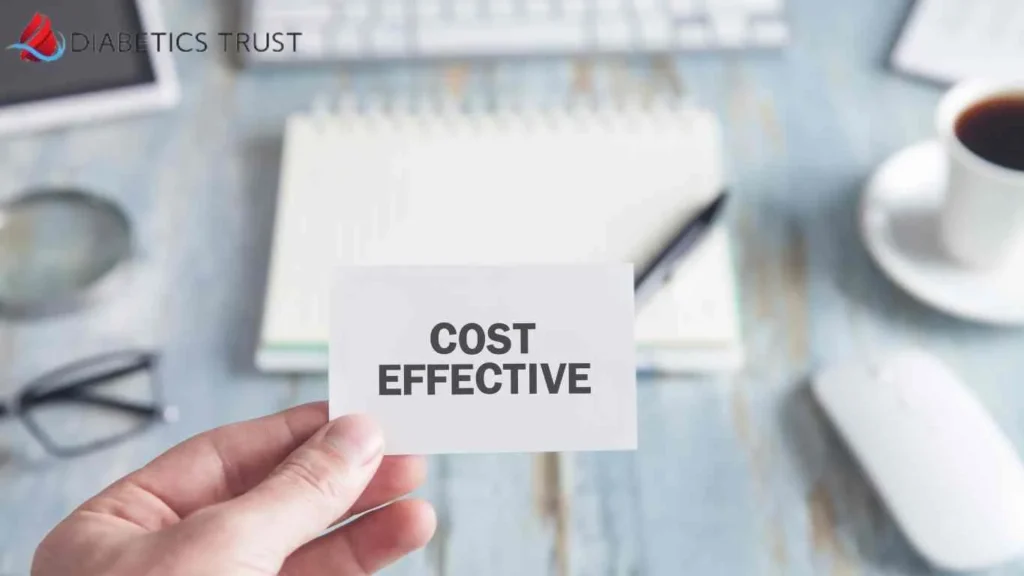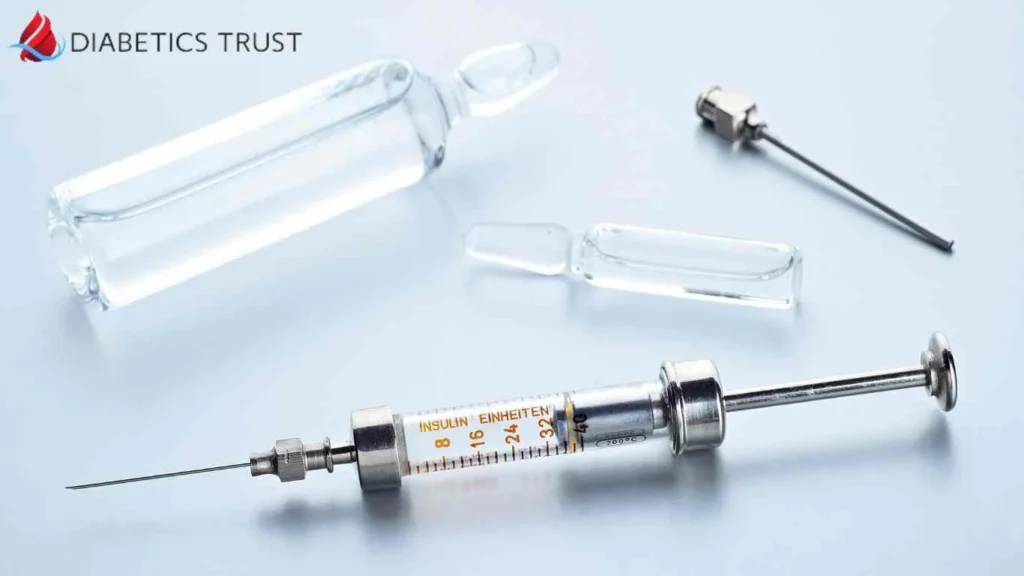Why is insulin so expensive? A question echoing in the minds of countless individuals managing diabetes, as they navigate through the intricate web of healthcare expenses. Insulin, a life-sustaining medication, has become synonymous with a financial burden that many bear, despite its pivotal role in health maintenance for diabetics. This article aims to dissect the layers behind the hefty price tag of insulin, exploring the factors that have catapulted this essential medication into a topic of economic debate and stress for patients.
Grasping the economic aspects of insulin is crucial for both patients and their families in strategizing healthcare management effectively. We will delve into the various facets of insulin pricing, providing insights and actionable advice to potentially alleviate the financial strain experienced by many. Explore the intricate relationship between diabetes and financial planning here.
The Financial Strain of Insulin Dependency
The economic impact of insulin dependency is undeniably substantial, often weaving a complex financial narrative for individuals who require this medication for survival.
A Closer Look at the Financial Burden
● Skyrocketing Prices: Over the past few decades, the cost of insulin has soared, placing a hefty financial burden on patients.
| Year | Average Price of Insulin per Month |
| 2001 | $45 |
| 2021 | $450 |
● Out-of-Pocket Expenses: Even with insurance, many individuals find themselves grappling with significant out-of-pocket expenses, further amplifying the economic strain.
Real-Life Implications
● Case Study – Jane Doe
A resident of New York, Jane, a Type 1 diabetic, spends approximately $600 monthly on insulin, despite having a comprehensive insurance plan. Her story mirrors the predicament of numerous others, where managing diabetes equates to navigating a financial minefield.
● The Ripple Effect
The financial strain extends beyond the individual, often impacting families and caregivers, shaping lifestyle and financial decisions on a broader scale.
● Visualizing the Escalation
Utilizing visual data, the graph below illustrates the exponential rise in insulin prices over the past two decades, highlighting a concerning trajectory for those dependent on it.

Why Is Insulin So Expensive?
Why does insulin carry such a hefty price tag? A question that unveils a complex web of factors contributing to its skyrocketing costs, impacting millions globally. The financial anatomy of insulin pricing is multifaceted, intertwining production costs, research and development (R&D), and the overarching influence of pharmaceutical giants and market monopolies.
1- Factors Elevating Insulin Prices
● Production and R&D Costs: The synthesis of insulin, especially its analog forms, involves intricate biotechnological processes and continuous R&D, incurring substantial expenses.
● Biotechnological Processes: The manufacturing of insulin involves sophisticated biotechnological methods, utilizing E. coli bacteria for the production of insulin analogs.
● Continuous Research: Persistent research endeavors to enhance insulin efficacy and delivery mechanisms also contribute to its overall cost.
2- Pharmaceutical Dominance
● Patent Control: Pharmaceutical companies often exercise stringent control over insulin patents, limiting the entry of generic versions into the market.
● Market Monopolies: The monopolization of the insulin market by a few pharmaceutical giants enables the control of prices, often to the detriment of consumers.
3- The Global Impact
● Accessibility Issues: The high cost invariably affects the accessibility of insulin, especially in low to middle-income countries, where patients often grapple with availability and affordability.
● Economic Disparities: The economic divide further exacerbates the issue, where individuals in certain regions bear the brunt of these elevated costs more profoundly.

Human Insulin vs. Analog Insulin: A Cost Comparison
Is human insulin cheaper, and if so, why might individuals opt for its analog counterparts? The dichotomy between human insulin and analog insulin is not merely a matter of cost but extends into realms of efficacy, accessibility, and individual diabetic management needs.
Deciphering the Differences
Human Insulin
● Cost-Effective: Generally, human insulin is more cost-effective compared to its analog counterparts.
● Accessibility: Often more readily available and accessible in various regions.
● On set of Action: Typically has a slower onset and longer duration of action compared to analog insulin.
Analog Insulin
● Price Point: Analog insulin tends to be pricier due to its complex manufacturing process and perceived benefits.
● Rapid Action: Often favored for its rapid onset of action and its ability to mimic the body’s natural insulin release more closely.
● Flexibility: Provides more flexibility in terms of administration timing related to meals.
Comparative Analysis
Efficacy and Management: While analog insulin offers more precise blood sugar control and flexibility, human insulin remains a viable option for numerous patients, offering effective management at a fraction of the cost.
Patient-Specific Needs: The choice between the two often boils down to individual needs, healthcare provider recommendations, and financial capability.
Navigating Through Choices
● Consultation
Engaging in thorough discussions with healthcare providers can illuminate the most viable option, aligning with both health and financial considerations.
● Insurance Considerations
Understanding insurance coverage and exploring potential subsidies or assistance programs can also influence the choice between human and analog insulin.

Is Insulin Cost-Effective?
Is insulin cost-effective? A question that intertwines the realms of medical necessity and financial burden, especially for those grappling with diabetes management. Insulin, while pivotal for glycemic control, brings along a financial strain that is often juxtaposed against its life-saving capabilities.
Necessity vs. Cost
● Indispensable Role
Insulin plays a non-negotiable role in managing and regulating blood sugar levels, especially for individuals with Type 1 diabetes.
● Life-Saving
For many, insulin isn’t an option but a requirement to sustain life and manage diabetes effectively.
Financial Burden
● Recurring Costs
The continuous nature of insulin use translates to a perpetual financial obligation, which can be strenuous for many.
Long-Term Implications and Cost Savings
● Preventing Complications
Effective insulin use is pivotal in preventing or delaying diabetes-related complications, such as cardiovascular diseases, neuropathy, and retinopathy.
● Cost of Complications
Managing these complications can incur additional costs in the long run, making effective insulin use a potentially cost-saving measure.
● Quality of Life
Beyond financials, effective insulin management significantly enhances the quality of life and productivity, which can indirectly influence economic aspects.
● Alternative Management Strategies
Lifestyle Modifications
Incorporating dietary changes and regular exercise can sometimes aid in better glycemic control, potentially reducing insulin dependency.
● Technology Use
Leveraging technology like insulin pumps or CGMs for more precise management, though initially costly, may offer better long-term control and prevent complications. Explore more about managing insulin resistance through alternative strategies such as yoga here.

Global Perspective: Insulin Pricing Around the World
Navigating through the global landscape reveals stark disparities in insulin pricing, influenced by various healthcare systems, policies, and socio-economic factors.
Comparative Analysis of Insulin Prices
● USA
Known for having one of the highest insulin prices globally, the cost often becomes a significant burden for uninsured or underinsured individuals.
● Canada
Insulin prices are considerably lower in Canada, often becoming a destination for “insulin tourism” for neighboring Americans.
● European Countries
Many European countries, with their universal healthcare systems, ensure that insulin is available at lower costs or free for patients.
Policies and Practices
Government Subsidies
Countries like the UK and Australia offer government subsidies, making insulin more affordable and accessible.
● Patent Laws
The enforcement and expiration of patent laws also influence insulin pricing, with generic versions being more accessible in certain regions.
Healthcare Systems and Insulin Pricing
● Universal Healthcare
Countries with universal healthcare often bear the brunt of insulin costs, ensuring that patients are not heavily burdened financially.
● Private Healthcare
In contrast, nations with predominantly private healthcare systems often witness higher insulin prices due to multiple stakeholders and profit margins.
Global Initiatives
● Insulin Access Programs
Various global initiatives and programs aim to enhance insulin access in low and middle-income countries, addressing disparities and ensuring availability.
● Advocacy
Global advocacy for affordable insulin continues to gain momentum, aiming to bridge disparities and ensure that insulin is accessible and affordable for all.

Strategies to Navigate Insulin Costs
Managing insulin costs effectively is pivotal for individuals grappling with diabetes, ensuring that the financial burden does not compromise their health management. The soaring prices of insulin have necessitated the exploration and utilization of various strategies to navigate through these financial challenges.
Actionable Tips to Manage Insulin Costs
● Bulk Purchases
Sometimes, buying insulin in bulk or opting for 90-day supplies instead of 30-day ones can offer cost savings.
● Generic Versions
Opting for generic insulin versions, when available and suitable, can significantly reduce costs.
Patient Assistance Programs and Discounts
● Manufacturer Programs
Many insulin manufacturers offer patient assistance programs that provide insulin at reduced prices or even free for eligible individuals.
● Discount Cards
Utilizing discount cards and coupons available through various platforms can also curtail insulin costs.
Insurance Leverage
● Understanding Plans
Thoroughly understanding your insurance plan, especially concerning prescription coverage, is crucial.
● Flexible Spending Accounts (FSAs)
Utilizing FSAs to pay for insulin can also offer some tax advantages and ease the financial burden.
Advocacy and Change: Fighting for Affordable Insulin
The battle against exorbitant insulin prices is not solitary, with numerous organizations and movements advocating for affordable insulin, striving to bring about tangible change and ensure that this life-saving drug is accessible to all.
Movements and Organizations
● Insulin4All
A prominent movement that has been vociferously advocating for affordable insulin, bringing attention to the struggles faced by those with diabetes.
● JDRF
An organization that not only funds research into type 1 diabetes but also advocates for new and existing therapies to be accessible.
Potential Policy Changes
● Insulin Price Cap
Advocacy for policies that cap insulin prices, ensuring that it does not skyrocket beyond affordability.
● Importation Laws
Some advocates are pushing for policies that allow the safe importation of insulin from countries where it is sold at a lower price.
Get Involved
● Join Movements
Becoming a part of advocacy movements, participating in campaigns, and raising your voice against exorbitant insulin prices.
● Support Organizations
Contributing to, or volunteering with organizations that are working towards making insulin affordable.
● Raise Awareness
Utilizing platforms to raise awareness about the financial burden of insulin and advocating for policy changes.

Conclusion
Affordable insulin is not merely a financial matter but a pivotal aspect of ensuring consistent and effective diabetes management. The financial burden that accompanies the high cost of insulin is undeniable, affecting millions of individuals globally. While strategies to navigate these costs are crucial, collective advocacy and policy changes are imperative to bring about systemic change in insulin pricing.
● Embrace Advocacy
Engage in movements and organizations fighting for insulin affordability.
● Share Your Story
Your experiences and stories can amplify the call for affordable insulin and bring about tangible change.
Additional Resources:Navigating through the financial maze of managing diabetes can be daunting. Here are some resources that might offer assistance and support:
● Organizations
JDRF, Diabetes Canada, and Diabetes UK offer resources and support for individuals with diabetes.
● Financial Assistance
Explore patient assistance programs offered by insulin manufacturers and non-profit organizations.
Frequently Asked Questions
Why is insulin so expensive?
The pricing of insulin is influenced by various factors, including research and development costs, manufacturing expenses, and market monopolies of pharmaceutical companies.
Can insulin prices be regulated?
Policy changes, such as implementing price caps and allowing the safe importation of insulin, can regulate insulin prices, making it more accessible.
How can I manage my insulin costs effectively?
Exploring patient assistance programs, utilizing discount cards, opting for generic versions, and leveraging insurance plans can help manage insulin costs.
References
1- “Insulin Access and Affordability Working Group: Conclusions and Recommendations.” American Diabetes Association. Link
2- Cefalu, W. T., Dawes, D. E., Gavlak, G., Goldman, D., Herman, W. H., Van Nuys, K., … & Thornton, P. (2018). “Insulin Access and Affordability Working Group: Conclusions and Recommendations.” Diabetes Care, 41(6), 1299-1311. Link
3- Herkert, D., Vijayakumar, P., Luo, J., Schwartz, J. I., Rabin, T. L., DeFilippo, E., & Tseng, C. W. (2019). “Access to Insulin: A Survey of Adults with Type 1 and Type 2 Diabetes.” Diabetes Care, 42(11), e172-e173. Link





